Cystamine dihydrochloride
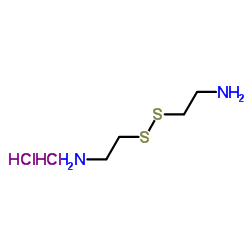
Cystamine dihydrochloride structure
|
Common Name | Cystamine dihydrochloride | ||
|---|---|---|---|---|
| CAS Number | 56-17-7 | Molecular Weight | 225.203 | |
| Density | 1.172g/cm3 | Boiling Point | 264.8ºC at 760mmHg | |
| Molecular Formula | C4H14Cl2N2S2 | Melting Point | 217-220 °C (dec.)(lit.) | |
| MSDS | Chinese USA | Flash Point | N/A | |
| Symbol |

GHS07 |
Signal Word | Warning | |
Use of Cystamine dihydrochlorideCystamine (dihydrochloride) is the disulfide form of the free thiol, cysteamine. Cystamine is an orally active transglutaminase (Tgase) inhibitor. Cystamine also has inhibition activity for caspase-3 with an IC50 value of 23.6 μM. Cystamine can be used for the research of severals diseases including Huntington's disease (HD) [1][2][3]. |
| Name | Cystamine dihydrochloride |
|---|---|
| Synonym | More Synonyms |
| Description | Cystamine (dihydrochloride) is the disulfide form of the free thiol, cysteamine. Cystamine is an orally active transglutaminase (Tgase) inhibitor. Cystamine also has inhibition activity for caspase-3 with an IC50 value of 23.6 μM. Cystamine can be used for the research of severals diseases including Huntington's disease (HD) [1][2][3]. |
|---|---|
| Related Catalog | |
| Target |
Caspase 3:23.6 μM (IC50) |
| In Vitro | Cystamine (dihydrochloride) has inhibition activity for caspase-3 with an IC50 value of 23.6 μM[1]. Cystamine (0-500 μM; 0-16 h) inhibits recombinant active caspase-3 in a concentration-dependent manner[1]. Cystamine (250 μM; 10 h) robustly increases the levels of glutathione[1]. Western Blot Analysis[1] Cell Line: Human neuroblastoma SH-SY5Y cells Concentration: 250, 500 μM Incubation Time: 0-16 h Result: Inhibited the MG132-mediated activation of caspase-3. Inhibited the H2O2-mediated activation of caspase-3. Inhibited caspase-3 activity in a tTG-independent manner. |
| In Vivo | Cystamine (dihydrochloride) (oral, i.p.; 112, 225 mg/kg) reduces Tgase activity and GGEL levels, lessens the behavioral and neuropathological severity, and extends survival in R6/2 transgenic HD mice[2]. Animal Model: R6/2 transgenic HD mice[2] Dosage: 112, 225 mg/kg Administration: Intraperitoneal or oral, daily Result: Significantly extended survival, improved body weight and motor performance, delayed the neuropathological sequela and significantly altered the levels of Tgase activity and N(Sigma)-(gamma-L-glutamyl)-L-lysine (GGEL) levels. |
| Density | 1.172g/cm3 |
|---|---|
| Boiling Point | 264.8ºC at 760mmHg |
| Melting Point | 217-220 °C (dec.)(lit.) |
| Molecular Formula | C4H14Cl2N2S2 |
| Molecular Weight | 225.203 |
| Exact Mass | 223.997543 |
| PSA | 102.64000 |
| LogP | 3.28980 |
| InChIKey | NULDEVQACXJZLL-UHFFFAOYSA-N |
| SMILES | Cl.NCCSSCCN |
| Stability | Stable. Incompatible with strong oxidizing agents. |
| Water Solubility | soluble |
CHEMICAL IDENTIFICATION
HEALTH HAZARD DATAACUTE TOXICITY DATA
|
| Symbol |

GHS07 |
|---|---|
| Signal Word | Warning |
| Hazard Statements | H302 |
| Personal Protective Equipment | dust mask type N95 (US);Eyeshields;Gloves |
| Hazard Codes | Xn:Harmful; |
| Risk Phrases | R22;R36/37/38 |
| Safety Phrases | S37/39-S26-S36/37/39 |
| RIDADR | NONH for all modes of transport |
| WGK Germany | 3 |
| RTECS | KR7260000 |
| HS Code | 29309070 |
| Precursor 1 | |
|---|---|
| DownStream 9 | |
| HS Code | 29309070 |
|---|
|
Curcumin delivery from poly(acrylic acid-co-methyl methacrylate) hollow microparticles prevents dopamine-induced toxicity in rat brain synaptosomes.
Int. J. Pharm. 486 , 259-67, (2015) The potential of poly(methyl methacrylate-co-acrylic acid) (PMMA-AA) copolymers to form hollow particles and their further formulation as curcumin delivery system have been explored. The particles wer... |
|
|
ROP and ATRP Fabricated Dual Targeted Redox Sensitive Polymersomes Based on pPEGMA-PCL-ss-PCL-pPEGMA Triblock Copolymers for Breast Cancer Therapeutics.
ACS Appl. Mater. Interfaces 7 , 9211-27, (2015) To minimize cardiotoxicity and to increase the bioavailability of doxorubicin, polymersomes based on redox sensitive amphiphilic triblock copolymer poly(polyethylene glycol methacrylate)-poly(caprolac... |
|
|
Glycopolymer micelles with reducible ionic cores for hepatocytes-targeting delivery of DOX.
Int. J. Pharm. 441(1-2) , 170-80, (2013) A novel galactose-decorated cross-linked micelles (cl-micelles) with ionic cores using cystamine (Cys) as a biodegradable cross-linker was prepared by using block ionomer complexes of poly(ethylene gl... |
| Ethanamine, 2,2'-dithiobis-, hydrochloride (1:2) |
| CYSTAMINIUM DICHLORIDE |
| aed |
| cystaminedihcl |
| OYSTAMINE DIHYDROCHLORIDE |
| 2,2'-dithiodiethanamine dihydrochloride |
| 2,2'-diaminodiethyl disulfide dihydrochloride |
| CystamineHcl |
| 2,2'-Disulfanediyldiethanamine dihydrochloride |
| 2,2'-dithiodiethylamine dihydrocloride |
| cystamine 2hcl |
| usafcb-34 |
| MFCD00012905 |
| EINECS 200-260-7 |
| 2,2'-Dithiobis[ethylamine] dihydrochloride |
| 2,2'-diaminoethyl disulfide dihydrochloride |
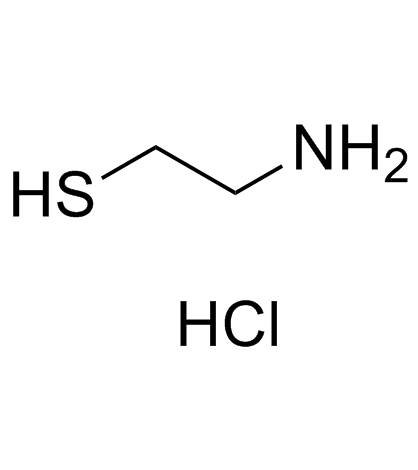 CAS#:156-57-0
CAS#:156-57-0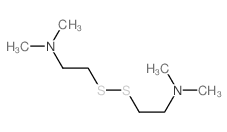 CAS#:1072-11-3
CAS#:1072-11-3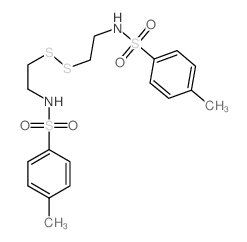 CAS#:23516-74-7
CAS#:23516-74-7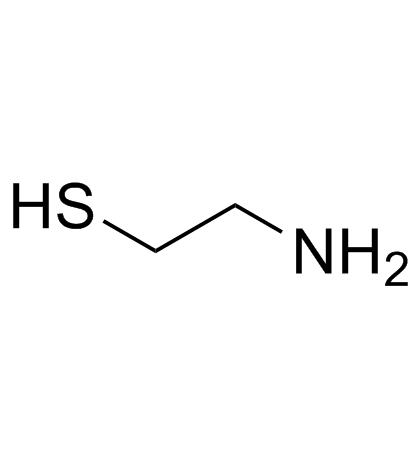 CAS#:60-23-1
CAS#:60-23-1 CAS#:67385-10-8
CAS#:67385-10-8![Ethanamine,2-[(phenylmethyl)thio]- structure](https://image.chemsrc.com/caspic/006/1007-54-1.png) CAS#:1007-54-1
CAS#:1007-54-1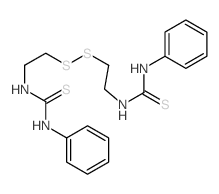 CAS#:15267-16-0
CAS#:15267-16-0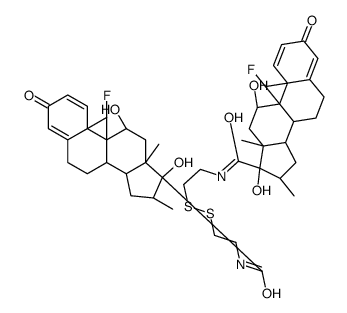 CAS#:282092-82-4
CAS#:282092-82-4![1-(2-chloroethyl)-3-[2-[2-[(2-chloroethyl-nitroso-carbamoyl)amino]ethy ldisulfanyl]ethyl]-1-nitroso-urea structure](https://image.chemsrc.com/caspic/485/77469-44-4.png) CAS#:77469-44-4
CAS#:77469-44-4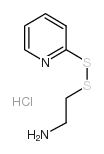 CAS#:83578-21-6
CAS#:83578-21-6
